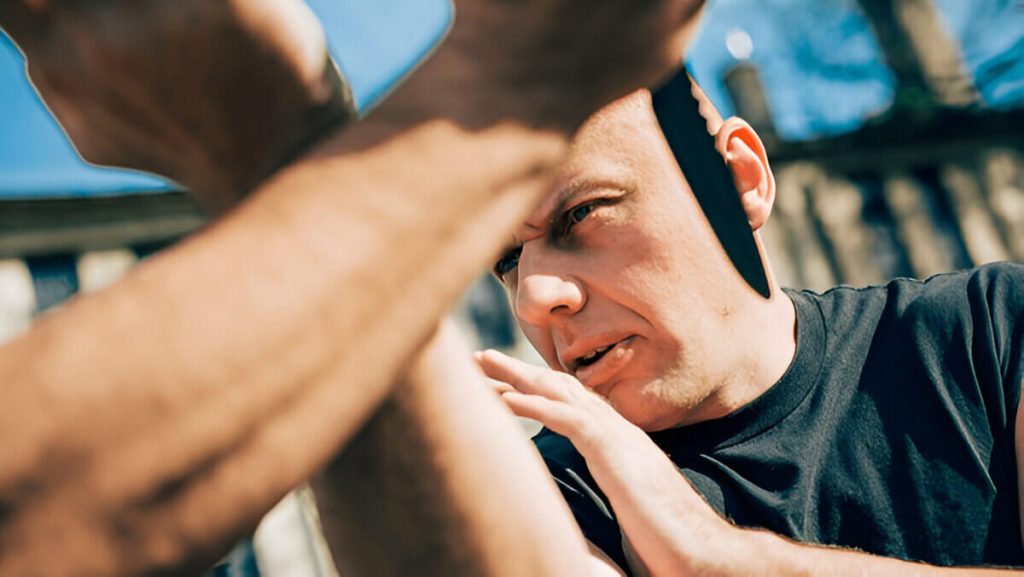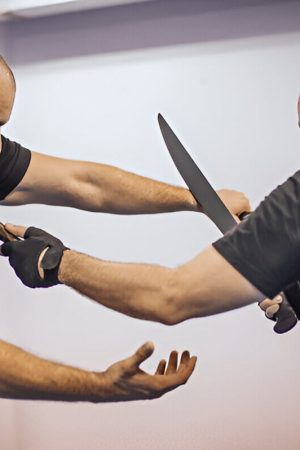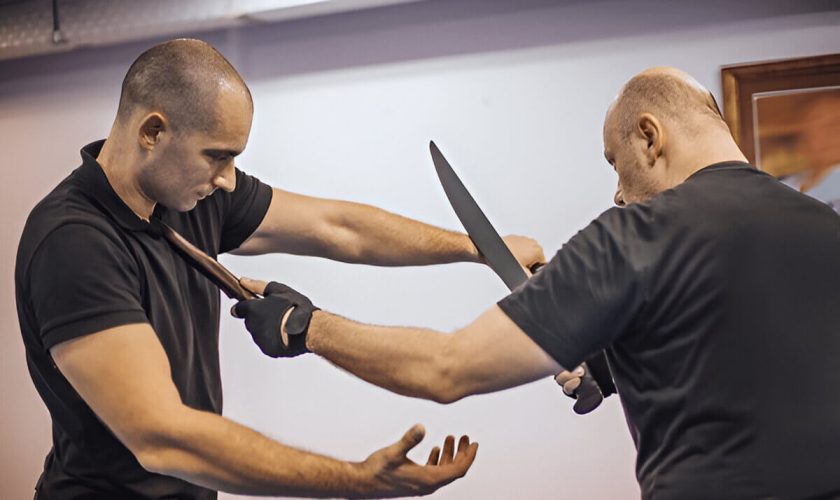Filipino Martial Arts (FMA) encompass a rich tapestry of fighting styles and self-defense techniques that have been developed over centuries in the Philippines. Known for their practicality and adaptability, these martial arts are deeply ingrained in Filipino culture and history. The most prominent styles include Eskrima, Arnis, and Kali, each emphasizing weapon-based combat with sticks, knives, and bladed instruments.
One of the defining features of Filipino martial arts is their focus on weapons training from the outset. Practitioners learn to wield sticks as extensions of their bodies, which later translates into proficient empty-hand techniques. This approach not only enhances coordination but also provides a comprehensive understanding of distance management and timing.
Filipino fighting styles are renowned for their fluidity and efficiency. Techniques often incorporate angles, footwork, and rapid strikes designed to neutralize opponents swiftly. Moreover, FMA practitioners are trained to adapt to various situations by leveraging everyday objects as improvised weapons, a testament to the art’s practical roots in self-defense.
As interest in Filipino martial arts grows globally, more people are discovering its unique blend of tradition and innovation. Whether for personal protection or cultural appreciation, FMA offers valuable insights into effective combat strategies while honoring its storied heritage.
The Rich History of Filipino Martial Arts
The rich history of Filipino Martial Arts (FMA) is a testament to the resilience and adaptability of the Filipino people. Among the most renowned disciplines are Arnis, Kali, and Escrima, each with its unique origins yet sharing common threads that reflect the rich cultural tapestry of the Philippines.
The history of Arnis can be traced back to pre-colonial times when indigenous tribes used it as a means of self-defense. It was during this period that traditional Filipino weapons such as sticks, knives, and bladed instruments became integral to combat training. The art form evolved through various influences over centuries, including interactions with Chinese, Malaysian, and Indonesian traders.
Kali history is often intertwined with that of Arnis and Escrima. While some suggest that “Kali” derives from an ancient word for blade or knife in Indonesia or Malaysia, others argue it refers to a specific style within FMA itself. Regardless of its etymology, Kali emphasizes fluid movements and intricate footwork designed for both offensive and defensive techniques.
Escrima origin stories highlight its development during Spanish colonization when Filipinos had to disguise their martial practices due to bans on weapons among natives. As a result, practitioners honed their skills using everyday objects like sticks or farm tools, ingenuity that ensured the survival and propagation of these martial arts even under oppressive conditions.
Today, these disciplines are celebrated not only for their historical significance but also for their practical applications in modern self-defense scenarios worldwide. Through continued practice and global dissemination by dedicated instructors, FMA remains an enduring symbol of Filipino heritage, a living tradition passed down through generations while adapting to contemporary needs.
Diverse Techniques and Styles in Filipino Martial Arts

Filipino Martial Arts (FMA) is renowned for its diverse techniques and styles, offering practitioners a comprehensive approach to self-defense and combat. Central to FMA are the disciplines of Arnis, Kali, and Eskrima, each contributing unique elements that make this martial art form both versatile and effective.
Arnis techniques focus heavily on weapon-based fighting, typically using sticks or knives. Practitioners learn to wield these weapons with precision through a series of drills that emphasize speed, agility, and accuracy. The fluidity of movement in Arnis allows fighters to transition seamlessly between offensive strikes and defensive maneuvers.
The Kali fighting style is often characterized by its emphasis on flow and adaptability. Kali teaches practitioners how to use their environment as an advantage while maintaining control over their movements. This style incorporates footwork patterns known as “triangles,” which help fighters move dynamically around opponents.
Eskrima drills are integral in developing reflexes and coordination. These drills often involve partner exercises where participants practice striking patterns against each other’s weapons or limbs. Such training enhances timing and spatial awareness critical skills for effective combat situations.
Empty hand combat in FMA is also a significant component, highlighting the art’s versatility beyond weaponry. Techniques include joint locks, throws, grappling methods, and striking combinations that can be employed when disarmed or facing an unarmed opponent.
Filipino Martial Arts offer a rich tapestry of techniques that cater to various combat scenarios making it an invaluable discipline for those seeking comprehensive martial arts training.
The Role of Weapons in Filipino Martial Arts Training
Filipino Martial Arts (FMA) is renowned for its practical approach to combat, deeply rooted in the use of traditional weapons. Among these, baston training holds a significant place. Bastons, or sticks, are not only fundamental tools in FMA but also serve as versatile instruments for developing coordination and precision. Stick fighting in FMA teaches practitioners how to effectively use these weapons while enhancing their reflexes and timing.
Knife fighting techniques in FMA are another crucial component of training. The art emphasizes agility and strategic movement, equipping martial artists with the skills needed to defend against or wield knives with precision. These techniques are designed to be adaptable, ensuring that practitioners can handle real-world scenarios with confidence.
Traditional weapons in FMA extend beyond sticks and knives to include a variety of tools like spears and swords. Each weapon offers unique lessons that contribute to a well-rounded martial arts education. Training with traditional weapons not only preserves cultural heritage but also instills a deep understanding of distance control, footwork, and tactical thinking.
The Benefits of Practicing Filipino Martial Arts for Mind and Body
Filipino Martial Arts (FMA) offer a host of benefits that extend beyond self-defense, providing both physical and mental advantages for practitioners. One of the primary self-defense benefits of FMA is its emphasis on practical techniques that are effective in real-world situations. Unlike some martial arts that focus solely on form or competition, FMA teaches adaptability and resourcefulness, equipping practitioners with skills to protect themselves in various scenarios.
Physical fitness through martial arts is another significant benefit of practicing FMA. The training involves rigorous drills and exercises that enhance cardiovascular health, improve strength, and boost flexibility. Regular practice helps tone muscles and increases endurance, making it an excellent full-body workout.
Beyond the physical aspects, there are profound mental benefits of martial arts training. Engaging in FMA requires concentration and discipline, which can lead to improved focus and mental clarity in everyday life. The practice also fosters resilience and stress management by teaching individuals how to remain calm under pressure. Moreover, the sense of accomplishment from mastering new skills can enhance self-confidence and personal growth.
Incorporating Filipino Martial Arts into your routine not only equips you with valuable self-defense techniques but also contributes significantly to your overall well-being by promoting physical fitness and mental fortitude.
The Global Influence and Adaptation of Filipino Martial Arts Today
Filipino Martial Arts (FMA) have carved a significant niche on the global stage, showcasing their adaptability and effectiveness in various settings. One of the most prominent forms, Modern Arnis, has gained widespread popularity worldwide. Practitioners from different countries are drawn to its practical techniques and fluid movements, which make it a versatile martial art suitable for both self-defense and combat sports.
The influence of FMA extends beyond dojos and training halls; it has also made a substantial impact in movies and media. Hollywood films often incorporate FMA techniques in action sequences due to their dynamic and visually appealing nature. This exposure has further fueled interest in learning these martial arts, as audiences are captivated by the swift strikes and intricate weapon handling displayed on screen.
Globally, Filipino Martial Arts continue to inspire martial artists with their rich history and tactical efficiency. As more practitioners embrace modern arnis practice worldwide, FMA’s global impact grows stronger. This cultural exchange not only preserves traditional Filipino combat systems but also enriches the international martial arts community by introducing diverse fighting styles that emphasize adaptability and creativity.
Embrace the Art and Legacy of Filipino Martial Arts for Personal Growth and Defense Skills
Filipino Martial Arts (FMA) offer an enriching journey that extends far beyond physical prowess. Embracing the art and legacy of FMA can significantly contribute to personal growth and enhance your defense skills. Rooted in centuries of tradition, these martial arts are not just about combat techniques but also about cultivating discipline, respect, and a deep understanding of self-defense.
FMA encompasses a wide array of styles, including Arnis, Eskrima, and Kali, each offering unique approaches to weaponry and hand-to-hand combat. Practitioners develop agility, precision, and adaptability skills that are invaluable both in self-defense scenarios and in everyday life challenges.
Moreover, the cultural heritage embedded within FMA provides practitioners with a sense of identity and connection to Filipino history. By learning these arts, individuals not only gain physical skills but also become part of a vibrant community that values tradition and camaraderie.
In conclusion, diving into the world of Filipino Martial Arts is an opportunity for holistic development. It enhances mental fortitude while equipping you with practical defense skills. Whether you’re seeking personal growth or an effective means of protection, FMA stands as a testament to resilience and cultural pride, a legacy worth embracing for anyone on this transformative journey.

